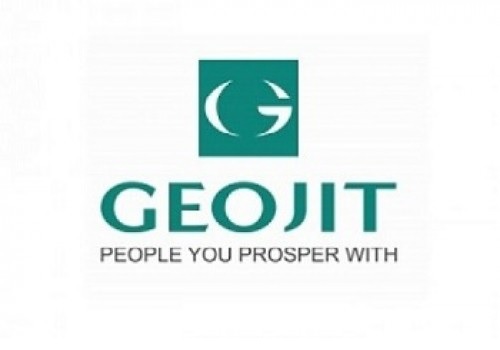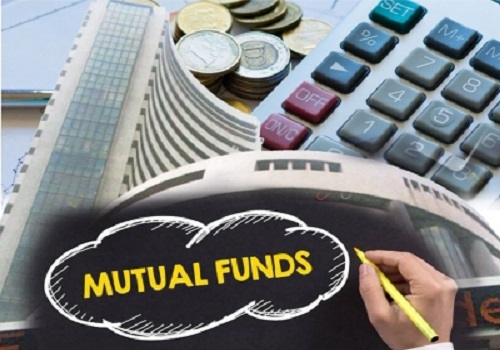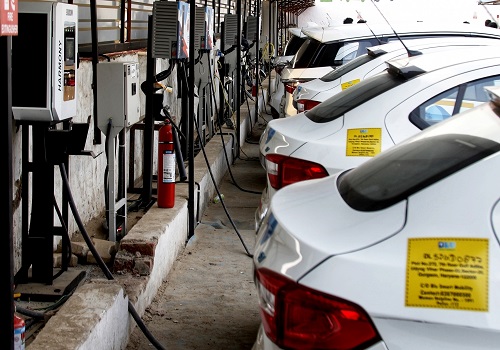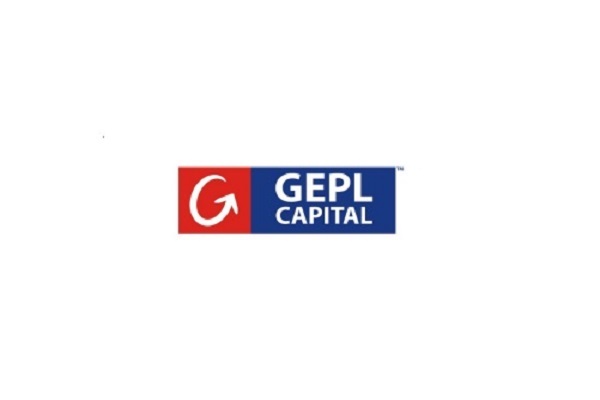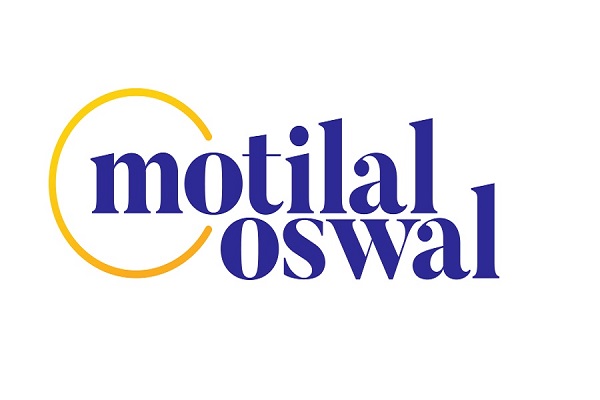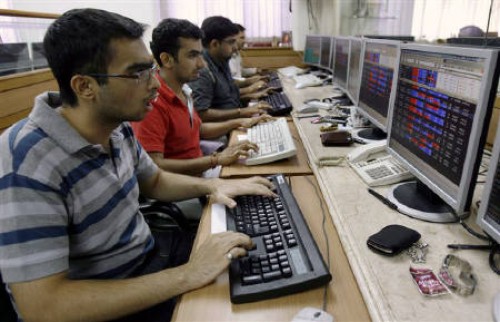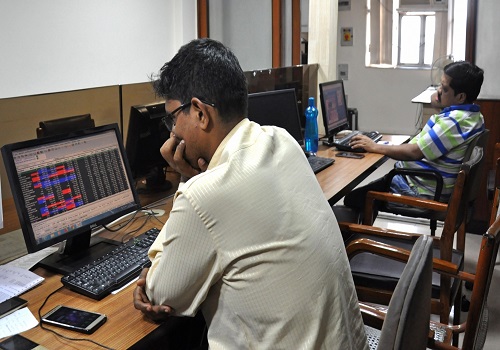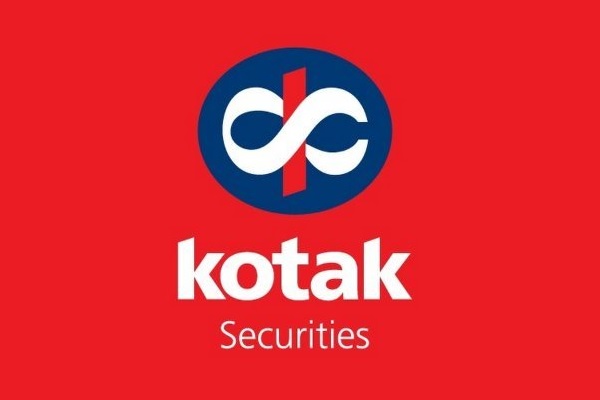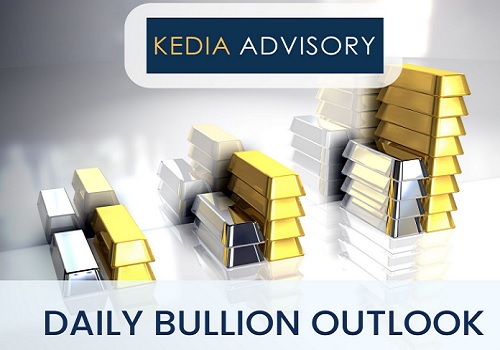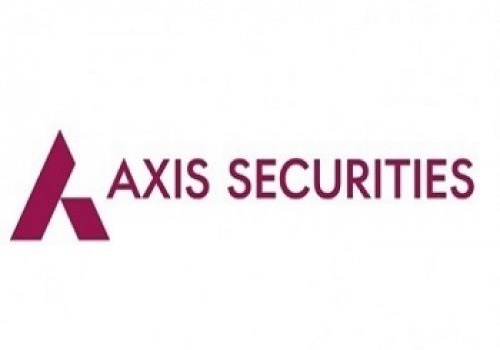Zinc trading range for the day is 242.4-255.8. - Kedia Advisory

Gold
Gold prices declined by 0.95% to settle at Rs.96,168 amid improving global sentiment spurred by optimism over a potential US-UK trade deal. This risk-on environment reduced demand for safe-haven assets like gold. Additionally, the US Federal Reserve maintained its benchmark interest rate, citing rising risks of inflation and unemployment. Fed Chair Jerome Powell signaled a cautious approach, emphasizing that no preemptive rate cuts are planned despite potential economic fallout from trade tariffs. Uncertainty remains high around US-China trade relations, especially as President Trump ruled out tariff reductions ahead of upcoming negotiations, offering some support and limiting further downside in gold. On the demand front, Indian markets witnessed a shift from discount to premium pricing for the first time in five months. Festive-driven buying, combined with a sharp price correction from recent record highs, revitalized consumer interest. Dealers in India moved from offering a $24 discount to charging a $3 premium per ounce. Globally, gold demand rose 1% year-on-year in Q1 2025 to 1,206 metric tons. Investment surged 170%, bolstered by strong inflows into gold ETFs and 14% growth in bar demand, offsetting a 32% decline in coin purchases. Technically, the market saw long liquidation with a 5.22% drop in open interest to 14,423 contracts. Immediate support lies at Rs.95,255, with deeper support at Rs.94,345. Resistance is seen at Rs.97,200, with potential for further gains up to Rs.98,235 if upward momentum resumes.
Trading Ideas:
* Gold trading range for the day is 94345-98235.
* Gold dropped as optimism over a potential US-UK trade deal boosted investor sentiment.
* Fed held its benchmark rate steady as expected and warned of rising risks of both inflation and unemployment.
* Fed Chair Jerome Powell also stated that the central bank is not considering a preemptive rate cut.
Silver
Silver prices gained 0.81% to settle at Rs.96,512, as persistent global economic and trade uncertainties drove investors toward safe-haven assets. The rebound came on the heels of the U.S. Federal Reserve maintaining its benchmark interest rate, while Fed Chair Jerome Powell took a cautious stance, emphasizing heightened risks to inflation and employment. Adding to market anxiety, President Trump reaffirmed the U.S. would not roll back tariffs on China as a precondition for upcoming trade talks in Switzerland, reducing optimism over any swift resolution to the trade tensions. On the supply-demand front, silver is poised to post another significant market deficit in 2025—the fifth consecutive year of shortfall—despite expectations of stable global demand at 1.20 billion ounces. Industrial demand remains the primary growth engine, forecast to hit a record high, fueled by structural demand from green economy sectors. Industrial fabrication is projected to grow by 3%, exceeding 700 million ounces for the first time. Physical investment demand is also anticipated to rise by 3%, driven by a rebound in investor activity in Europe and North America, as profit-taking subsides and confidence returns. Technically, the market showed signs of short covering, as open interest dropped 5.72% to 16,305 while prices moved higher by Rs.779. Silver now finds support at Rs.95,250, with a further downside risk to Rs.93,985. On the upside, resistance is seen at Rs.97,240, and a break above that could push prices toward Rs.97,965.
Trading Ideas:
* Silver trading range for the day is 93985-97965.
* Silver rose as investors sought refuge in safe-haven assets amid persistent economic and trade uncertainties.
* Federal Reserve’s decision to hold interest rates steady, as expected.
* Fed Chair Powell adopted a cautious tone, highlighting rising risks to both inflation and employment
Crude oil
Crude oil prices surged by 4.24% to settle at Rs.5,163, driven by a sharper-than-expected drop in U.S. crude inventories and early indications of a potential supply correction. The U.S. Energy Information Administration reported a drawdown of 2.032 million barrels for the week ending May 2, 2025, surpassing market expectations of a 1.7 million barrel decrease. Additionally, inventories at the Cushing, Oklahoma delivery hub dropped by 740,000 barrels. While distillate fuel stocks declined by 1.107 million barrels, gasoline inventories saw a modest build of 188,000 barrels. Despite the bullish inventory data, market headwinds persist. OPEC+ agreed to a second consecutive monthly production hike, adding 411,000 barrels per day in June, which could weigh on prices moving forward. Moreover, the International Energy Agency (IEA) warned of a potential global supply surplus of 600,000 barrels per day in 2025, increasing to 1 million bpd if OPEC+ continues to unwind its output cuts without controlling overproduction. Compounding the bearish sentiment, Citi Research revised its 3-month Brent crude forecast downward to $55 per barrel due to the resumption of U.S.-Iran nuclear deal negotiations, which could reintroduce Iranian supply into the market. On the demand side, the IEA trimmed its 2025 oil demand growth forecast by 70,000 bpd. Technically, crude oil market is in short covering mode with open interest falling 14.27% to 14,517. Immediate support is pegged at Rs.5,014, with a break potentially testing Rs.4,865, while resistance is seen at Rs.5,240 and further at Rs.5,317.
Trading Ideas:
* Crudeoil trading range for the day is 4865-5317.
* Crude oil rose supported by a larger-than-expected drop in US crude stocks and early signs of a potential supply correction.
* OPEC+ agreed to increase oil production for a second straight month, boosting output in June by 411,000 bpd.
* Citi cuts short term Brent crude price forecast to $55 on potential US-Iran nuclear deal
Natural gas
Natural gas prices edged higher by 0.62% to settle at Rs.306.8, supported by reduced supply and strong liquefied natural gas (LNG) exports. Production is estimated to decline by 5.5 billion cubic feet per day (bcfd), reaching a 10-week low of 102.6 bcfd. Adding to the bullish momentum, gas flows to the Freeport LNG facility in Texas rebounded sharply, surging from 0.3 bcfd on Tuesday to 1.8 bcfd on Wednesday following a temporary outage. April witnessed record LNG export levels, averaging 16.0 bcfd, cementing the U.S. position as the top global LNG exporter. Despite the supply-side support, storage data showed a significant build. U.S. utilities added 104 Bcf to underground storage in the week ending May 2, in line with expectations of 101 Bcf. On the outlook front, the U.S. Energy Information Administration (EIA) projects both natural gas production and consumption to hit record highs in 2025. Dry gas output is expected to rise to 104.6 bcfd in 2025 and further to 107.3 bcfd in 2026. Consumption is also forecast to peak at 90.7 bcfd in 2025 before easing. Technically, the market is under fresh buying pressure, with open interest rising by 9.71% to 13,988. Support is seen at Rs.300.6, with lower levels at Rs.294.5 if breached. Resistance is likely at Rs.315.5, and a move above could push prices toward Rs.324.3.
Trading Ideas:
* Naturalgas trading range for the day is 294.5-324.3.
* Natural gas climbed as reduced supply and record LNG exports supported prices.
* Output is projected to drop by around 5.5 billion cubic feet per day (bcfd), hitting a 10-week low of 102.6 bcfd.
* US utilities added 104 bcf of natural gas to storage for the week ending May 2, 2025.
Copper
Copper prices climbed by 1.17% to settle at Rs.855.9, driven by renewed optimism surrounding demand from China, the world’s top consumer of the red metal. A key boost came from strong procurement activity by the State Grid Corp of China, which has led to increased orders among wire and cable manufacturers. Additionally, consumer demand in China appears resilient, with home appliance sales rising nearly 16% during the early-May holiday period. This surge in consumer activity suggests improving domestic economic conditions, further supporting copper demand. Adding to the bullish sentiment, the People's Bank of China recently eased monetary policy by cutting key lending rates by 10 basis points and reducing the reserve requirement ratio by 50 basis points, signaling ongoing efforts to stimulate economic activity. On the global front, a possible breakthrough in U.S.-China trade talks scheduled in Switzerland this weekend is also generating optimism, which could further strengthen industrial demand for copper. However, supply fundamentals remain somewhat balanced. The International Copper Study Group (ICSG) reported a global refined copper surplus of 61,000 metric tons in February, slightly narrower than January’s 90,000-ton surplus. Year-to-date surplus stands at 150,000 tons. Technically, the market is in short covering as open interest fell by 4.84% to 6,610. Immediate support lies at Rs.845.9, with further downside potential to Rs.835.8. Resistance is now seen at Rs.861.4, and a break above could lead to a test of Rs.866.8.
Trading Ideas:
* Copper trading range for the day is 835.8-866.8.
* Copper rose as signs of robust demand in China, boosted market sentiment.
* Strong procurement activity from State Grid Corp of China, which has driven increased orders among wire and cable manufacturers.
* Representatives from the US and China are set to meet in Switzerland this weekend to discuss trade issues
Zinc
Zinc prices rose by 1.8% to settle at Rs.251.05, buoyed by improving global trade sentiment despite escalating trade tensions between the U.S. and China. Investors welcomed signs of negotiation progress, but the tit-for-tat tariff war remains a concern, with China slapping up to 125% duties on U.S. goods and the U.S. raising its own to 145%, particularly targeting metals. Domestically and globally, the zinc supply landscape is shifting. The International Lead and Zinc Study Group (ILZSG) projects the global refined zinc market will be in surplus this year, with demand expected to grow 1% to 13.64 million tons and output rising 1.8% to 13.73 million tons. Mined zinc production is forecast to rise by 4.3% in 2025 to 12.43 million tons, supported by new capacity in Russia and the DRC. March 2025 saw a strong recovery in China’s refined zinc output, jumping nearly 14% month-on-month and over 4% year-on-year. Factors such as improved treatment charges, rising sulphuric acid prices, and post-holiday production rebounds across major regions like Hunan, Yunnan, and Shaanxi contributed to this increase. Technically, the market is in a short-covering phase with open interest dropping by 10.96% to 2,412, suggesting profit booking after recent gains. Immediate support is at Rs.246.8, and a drop below that could lead to a test of Rs.242.4. Resistance is now seen at Rs.253.5, with a potential extension to Rs.255.8 if momentum continues.
Trading Ideas:
* Zinc trading range for the day is 242.4-255.8.
* Zinc prices gained amid improving global trade sentiment.
* The global refined zinc market will be in surplus this year, the International Lead and Zinc Study Group (ILZSG) said.
* In March 2025, China's refined zinc production increased by nearly 14% MoM and over 4% YoY
Aluminium
Aluminium prices surged by 2.43% to settle at Rs.234.3, supported by supply disruption concerns after reports emerged that Guinea may revoke Emirates Global Aluminium's mining licence. Guinea is a key bauxite supplier, and any regulatory moves affecting mining operations there can disrupt the global aluminium supply chain. Despite geopolitical supply risks, the aluminium market is grappling with ample supply and dampened demand expectations. The U.S. economy shrank in Q1 for the first time in three years, and the IMF projects only 1.8% GDP growth for 2025. Goldman Sachs, citing these sluggish growth forecasts, has cut its aluminium price outlook, expecting a Q3 low of $2,000/ton. At the same time, global primary aluminium output in March rose by 2.3% YoY to 6.227 million tonnes, while China's output alone jumped 4.4% to 3.75 million tonnes in March. On the inventory front, aluminium stocks at the Shanghai Futures Exchange dipped 1.5% week-on-week, and Japanese port inventories fell 1.2% in March, offering some relief on the supply front. Technically, the market shows signs of short covering, with open interest down by 9.8% to 4,701 as prices gained Rs.5.55. Immediate support lies at Rs.230.4, with a further downside potential to Rs.226.5. Resistance is seen at Rs.236.4, and a break above could push prices toward Rs.238.5.
Trading Ideas:
* Aluminium trading range for the day is 226.5-238.5.
* Aluminium gained after Guinea’s move to revoke EGA’s mining licence raised supply concerns.
* However, upside seen limited as the backdrop of ample supply and lingering macroeconomic headwinds.
* Global primary aluminium output in March rose 2.3% year on year to 6.227 million tonnes
Cottoncandy
Cottoncandy prices declined by 0.59% to settle at Rs.54,190, pressured by weak demand and sluggish mill buying amidst liquidity constraints. Despite a reduced domestic crop estimate, abundant supply and limited immediate purchasing needs from mills have kept market sentiment under pressure. Mills are currently well-stocked, which has diminished spot demand, contributing to the downside in prices. The Cotton Association of India (CAI) further revised down its crop output estimates for the 2024–25 season to 291.30 lakh bales (170 kg each), a reduction of 4 lakh bales from previous estimates, largely due to lower production in Maharashtra. Total cotton supply till March-end, including 25 lakh bales of imports and 30.19 lakh bales of opening stock, is pegged at 306.83 lakh bales. Stocks at the end of March stood at 127.83 lakh bales, with 100.83 lakh bales held by trade and government agencies. CAI also revised India's import forecast for 2024–25 upwards to 33 lakh bales, more than double last season's 15.2 lakh bales, reflecting expectations of tighter domestic availability. On the global front, the USDA’s May report reflects reduced global production and consumption, with ending stocks slightly higher. Technically, the market is undergoing long liquidation with open interest down by 0.41% to 242. Cottoncandy finds support at Rs.53,800, below which it could test Rs.53,400. Resistance lies at Rs.54,620, and a breakout above could push prices toward Rs.55,040.
Trading Ideas:
* Cottoncandy trading range for the day is 53400-55040.
* Cotton dropped amid weak demand and payment constraints.
* Pressure also seen due to a substantial increase in supply and limited mill buying.
* Mills are well-stocked and are not facing immediate purchasing requirements.
* In Rajkot, a major spot market, the price ended at 26125.85 Rupees dropped by -0.18 percent.
Turmeric
Turmeric prices slipped by 0.61% to settle at Rs.13,914, pressured by increased arrivals and weak export enquiries. Daily arrivals rose sharply to around 57,500 quintals, almost doubling from the previous session’s 29,860 quintals, which contributed to bearish pressure on prices. Despite this, the downside was capped due to persistent concerns over lower production and delayed harvesting across key growing regions. Although the turmeric sowing area increased by 10% this season to 3.30 lakh hectares compared to last year’s 3 lakh hectares, productivity is expected to be adversely impacted by untimely rains. Early reports from the Nanded region indicate smaller rhizomes and signs of crop rot, suggesting a potential 10–15% drop in yield, though this will be confirmed only after full-scale harvesting begins. Export activity also reflected mixed trends. Between April 2024 and January 2025, turmeric exports rose 12.93% to 1.49 lakh tonnes compared to the same period last year. However, January 2025 saw a 23.17% month-on-month decline in exports, signaling weaker demand. On the import front, the April–January 2025 period saw a sharp 70.13% rise in imports year-on-year, but January alone witnessed a significant 64.56% drop compared to the same month in 2024. Technically, the market is under fresh selling pressure, as evidenced by a 9.22% rise in open interest to 13,385, suggesting increased short positions. Turmeric has immediate support at Rs.13,764, and a break below could lead to a test of Rs.13,612. On the upside, resistance is seen at Rs.14,154, and a breakout above that level may push prices toward Rs.14,392.
Trading Ideas:
* Turmeric trading range for the day is 13612-14392.
* Turmeric dropped due to increased arrivals and owing to weak export enquiries.
* Total arrivals rose to around 57,500 quintals, up significantly from 29,860 quintals in the previous session.
* However downside seen limited as persistent concerns about low arrivals and lower production estimates.
* In Nizamabad, a major spot market, the price ended at 14439.1 Rupees gained by 0.67 percent.
Jeera
Jeera prices fell by 1.15% to settle at Rs.21,465 amid weaker domestic buying and subdued export demand. The decline was largely attributed to the end of the retail season and limited foreign buyer activity. Increased supply also weighed on prices, as arrivals in major mandis rose to 32,900 bags from 28,000 in the previous session. Despite a delayed start in sowing due to unfavourable weather in Gujarat and Rajasthan, production for the current season is expected to be on par with last year thanks to improved crop conditions and favorable sowing outcomes. Export dynamics remain a mixed bag. While jeera exports surged by nearly 67% year-on-year during April–January 2025 to reach 182,167.70 tonnes, monthly exports fell 5.50% in January compared to December. However, year-on-year, January exports rose 37.82%. On the other hand, jeera imports plummeted by over 93% during the same period, with January imports dropping over 87% year-on-year and more than 80% from the previous month. This steep decline in imports suggests ample domestic availability, reducing the need for external sourcing. Currently, about 20 lakh bags of jeera remain with farmers, and only 3–4 lakh bags are expected to be traded by season-end, resulting in an estimated carry-forward stock of around 16 lakh bags. Technically, the market is under fresh selling pressure, with open interest increasing by 7.82% to 4,551, signaling increased bearish positioning. Jeera finds immediate support at Rs.21,230, with further downside likely toward Rs.20,990 if broken. Resistance is seen at Rs.21,840, and a breakout above this may push prices to Rs.22,210.
Trading Ideas:
* Jeera trading range for the day is 20990-22210.
* Jeera settled flat due to lower buying from domestic buyers and subdued export demand.
* Total arrivals in major mandis rose to 32,900 bags from 28,000 bags in the previous session, increasing supply side pressure.
* Traders attributed the fall mainly to the conclusion of the retail season and continued inactivity on the part of foreign buyers.
* In Unjha, a major spot market, the price ended at 22227.1 Rupees dropped by -0.19 percent.
Views express by all participants are for information & academic purpose only. Kindly read disclaimer before referring below views
